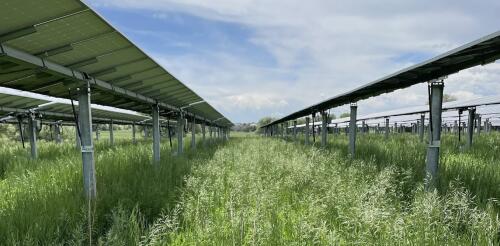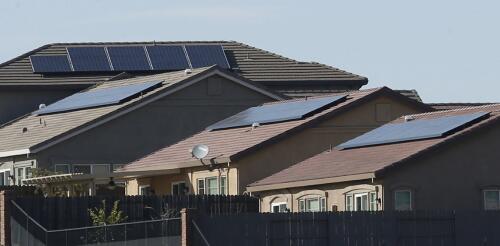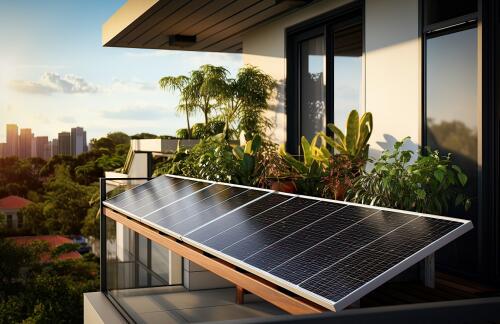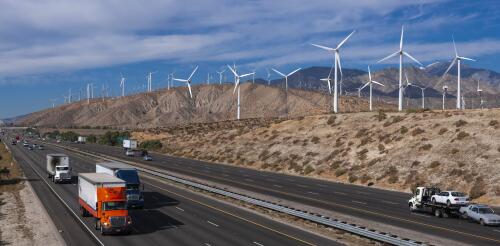Solar energy
As societies look for ways to cut greenhouse gas emissions and slow climate change, large-scale solar power is playing a central role. Climate scientists view it as the tool with the greatest potential to reduce carbon dioxide emissions by 2030. In the U.S., the Department of Energy predicts that solar will account for nearly 60% of all new utility-scale electricity-generating capacity installed in 2024. But ideal locations for solar development often overlap with croplands or grasslands used for livestock grazing. Typically, large-scale solar arrays are designed to maximize energy generation, without much consideration for the ecosystems in which they are placed. For example, grading land and removing vegetation can cause erosion and send runoff into waterways. Solar developers have been fined for such environmental violations in Georgia, Massachusetts, Alabama, Idaho and Illinois. There also are concerns about how large solar installations affect animal movement patterns...
Small-scale solar power, also known as rooftop or distributed solar, has grown considerably in the U.S. over the past decade. It provides electricity without emitting air pollutants or climate-warming greenhouse gases, and it meets local energy demand without requiring costly investments in transmission and distribution systems. However, its expansion is making it harder for electric utilities and power grid managers to design fair and efficient retail electricity rates – the prices that households pay. Under traditional electricity pricing, customers pay one charge per kilowatt-hour of electricity consumption that covers both the energy they use and the fixed costs of maintaining the grid. As more people adopt rooftop solar, they buy less energy from the grid. Fewer customers are left to shoulder utilities’ fixed costs, potentially making power more expensive for everyone. This trend can drive more customers to leave the system and raise prices further – a...
This new wave of solar producers aren’t just getting cheap electricity, they’re also participating in the energy transition. More than 400,000 plug-in solar systems have been installed in Germany, most of them taking up a seamless spot on people’s balconies. New data shows at least 50,000 of the PV devices were added in the first quarter of 2024 alone. A boom born from Germany’s “very strong solar culture”, in the words of one expert. Solar balconies are a piece of the wider energy transition across Europe, explains Jan Osenberg, a policy advisor at the SolarPower Europe association. “We see them as a subset of rooftop solar, but also as something different,” he tells Euronews Green. “We basically see it as a trend to use all possible artificial infrastructure for solar generation.” Train tracks, motorways, carparks, car roofs, cemeteries and building facades… the list...
The story of renewable energy’s rapid rise in Latin America often focuses on Chinese influence, and for good reason. China’s government, banks and companies have propelled the continent’s energy transition, with about 90% of all wind and solar technologies installed there produced by Chinese companies. China’s State Grid now controls over half of Chile’s regulated energy distribution, enough to raise concerns in the Chilean government. China has also become a major investor in Latin America’s critical minerals sector, a treasure trove of lithium, nickel, cobalt and rare earth elements that are crucial for developing electric vehicles, wind turbines and defense technologies. In 2018, the Chinese company Tianqi Lithium purchased a 23% share in one of Chile’s largest lithium producers, Sociedad Química y Minera. More recently, in 2022, Ganfeng Lithium bought a major evaporative lithium project in Argentina for US$962 million. In April...
California is embarking on an audacious new climate plan that aims to eliminate the state’s greenhouse gas footprint by 2045, and in the process, slash emissions far beyond its borders. The blueprint calls for massive transformations in industry, energy and transportation, as well as changes in institutions and human behaviors. These transformations won’t be easy. Two years of developing the plan have exposed myriad challenges and tensions, including environmental justice, affordability and local rule. For example, the San Francisco Fire Commission had prohibited batteries with more than 20 kilowatt-hours of power storage in homes, severely limiting the ability to store solar electricity from rooftop solar panels for all those times when the sun isn’t shining. More broadly, local opposition to new transmission lines, large-scale solar and wind facilities, substations for truck charging, and oil refinery conversions to produce renewable diesel will slow the tran...




